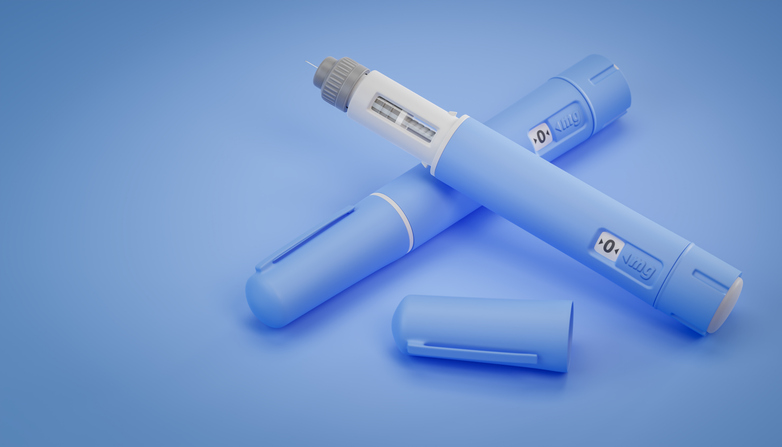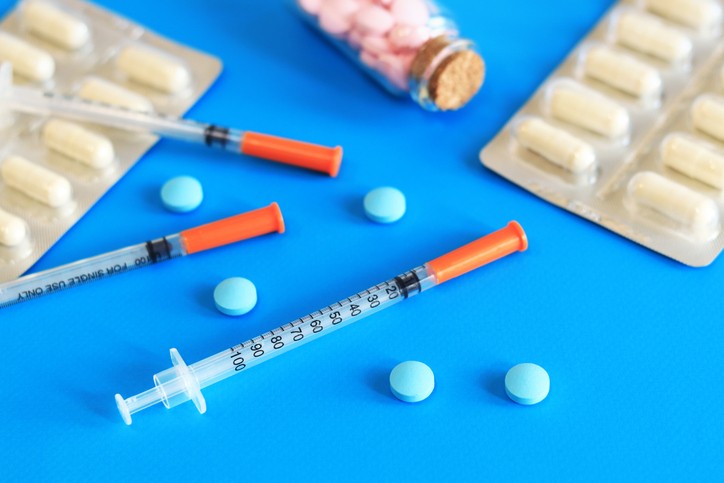Table of Contents
Are you considering BPC-157 for healing but unsure about the best administration method? This article will provide a comprehensive overview of BPC-157, including its benefits and administration methods. We will delve into the differences between injection and oral administration, exploring the efficacy, speed of healing, and cost analysis of both approaches. By the end, you will have a clearer understanding of how to choose the right administration method for optimal healing with BPC-157.
Introduction to BPC-157
BPC-157 is one of the most talked-about peptides in the world of recovery and performance—and for good reason. Originally studied for protecting the stomach, it quickly gained fame for doing much more. This powerful compound may help speed up healing, reduce inflammation, and even support the growth of new blood vessels. Whether it’s muscle tears, tendon strains, or nagging injuries, BPC-157 is being explored as a go-to for faster bounce-back. Some studies also suggest it could play a role in brain health and overall wellness. With growing research behind it, BPC-157 is becoming the top choice for people looking to upgrade their body’s natural repair system.

Understanding BPC-157 and Its Benefits
BPC-157 is being explored for a wide range of healing and recovery applications. Studies suggest it may help accelerate wound healing, reduce inflammation, repair muscles and tendons, and support gut health. Its regenerative effects—like promoting blood vessel growth and protecting nerve tissue—make it especially promising for injuries, post-surgery recovery, and even neurological support. From gym-related strains to chronic digestive issues, BPC-157 is a versatile tool in the wellness enthusiast’s toolkit.
Overview of BPC-157 Administration Methods and Dosage
BPC-157 administration methods include oral, intramuscular, subcutaneous, and nasal.
- Oral Administration – A common dosage range for BPC-157 is between 250-500 mcg per day, typically split into two doses.
- Intramuscular injections – This usually requires 250-500 mcg injected into the muscle once or twice daily.
- Subcutaneous administration – This involves similar dosages injected just under the skin.
- Nasal Administration – When using the nasal route, dosages around 100-250 mcg per nostril are often recommended.
To ensure safety, it’s crucial to adhere to sterility protocols when preparing injections, rotating injection sites, and storing BPC-157 properly. Potential side effects like mild irritation or headaches may occur, though it is generally considered safe when used within recommended dosages and administration methods. If you are new to peptide therapy we recommend reading Peptide Safety 101: How to Reconstitute, Inject, and Store Peptides the Right Way.
Injection Administration of BPC-157
When BPC-157 is administered through injection, it directly targets the affected area(s), enhancing the regeneration of damaged tissues. It boosts blood vessel growth (a process called angiogenesis), which brings more oxygen and nutrients to the area—key ingredients for healing. At the same time, it encourages the production of fibroblasts, the cells that help build collagen and other materials needed to rebuild strong, healthy tissue.
How Does Injection Administration Work?
-
Intramuscular (IM) Injections
IM injections deliver the peptide deep into a muscle—such as the glute, thigh, or shoulder—using a 1 to 1.5 inch needle. This method is sometimes used when targeting a specific deep-tissue injury, like a torn muscle or joint inflammation. Because BPC-157 works systemically though —meaning it travels to where it’s needed in the body— IM isn’t necessary for great results. -
Subcutaneous (Subq) Injections
Subq injections go just beneath the skin—usually in the belly or thigh—using a very short insulin needle (around 0.25 to 0.33 inches). This method is safe, simple, and comfortable, making it ideal for daily, at-home use. While subq delivers strong systemic benefits—like improved gut health and reduced inflammation—it also offers powerful local healing. BPC-157 naturally migrates to areas of tissue damage, meaning even shallow subq injections can support direct repair of muscles, tendons, and joints. For most users, it’s an effective, accessible option that delivers noticeable results. -
Peptide Pens
Peptide pens are an easy, beginner-friendly option for subcutaneous injection. These devices use ultra-tiny needles and make dosing fast, discreet, and virtually painless. For those new to peptides or hesitant about syringes, pens offer a convenient and approachable alternative without compromising effectiveness.

Benefits of Injecting BPC-157
Injectable BPC-157 has been linked to a wide range of healing benefits, including:
- Accelerated repair of muscles, tendons, ligaments, and bones
- Faster recovery from wounds, injuries, and physical trauma
- Support for gut lining integrity and overall digestive balance
- Cardiovascular protection, including blood vessel repair and circulation support
- Anti-inflammatory effects and improved nerve healing
- Increased collagen production for stronger joints and healthier skin
- Stimulation of growth factors essential for tissue regeneration
Thanks to its ability to act both locally at the injection site and systemically throughout the body, BPC-157 is gaining recognition as a versatile tool for full-body recovery, injury repair, and wellness optimization—benefiting everything from the gut to the heart to the brain.
Click here for our report on BPC-157: How it Works, Benefits, Dosage, Side Effects and Safety.
Potential Side Effects and Risks of Injection
Injectable BPC-157 is generally considered safe and well-tolerated, especially when used at appropriate doses and with clean technique. However, like any bioactive compound, it can cause mild side effects. Some users experience headaches, nausea, or fatigue when first starting out—often due to a mild detox response. Staying well-hydrated, injecting after a light meal, or dosing in the evening before bed can make a big difference. If symptoms become uncomfortable, you can always try lowering the dose or taking a short break before restarting slowly.
Redness or soreness at the injection site is also common and usually temporary. To minimize irritation and reduce the risk of infection, it’s important to rotate injection sites and always use sterile tools—you’ll find more tips in our peptide safety guide. Though rare, allergic reactions or interactions with medications may occur, so it’s wise to speak with a healthcare provider if you have existing health conditions or are taking other treatments.
When used mindfully, BPC-157 has a strong safety profile and serves as a powerful ally for healing and recovery—especially when paired with smart habits and attention to how your body responds.

Oral Administration of BPC-157
Oral BPC-157 is often used to support gut health, digestive balance, and low-grade inflammation. It helps reduce oxidative stress, soothe the intestinal lining, and promote microbiome stability—making it a practical option for mild cases of leaky gut, bloating, or long-term GI maintenance.
That said, oral bioavailability is significantly lower than injection. Much of the peptide is broken down during digestion, which limits how much reaches the bloodstream. For this reason, injection is generally more effective, even for gut-related issues.
How does Oral Administration Work?
When taken orally, BPC-157 makes direct contact with the digestive tract, where it can help calm inflammation and support tissue repair at the local level. Some of it may also be absorbed systemically, offering broader support, but these effects are typically slower and less predictable than with injection.
Benefits of Orally Taking BPC-157
The primary benefit of oral BPC-157 lies in its direct interaction with the digestive system. It may help reinforce gut lining integrity, reduce inflammation, and support a healthier microbiome—contributing to better digestion, nutrient absorption, and immune function.
While BPC-157 is most well-known for supporting muscle and tendon repair, those regenerative effects are best achieved through injection. Oral delivery may offer indirect support for long-term recovery or low-grade inflammation, but it’s not considered effective for treating acute injuries.
Considerations for Oral Administration
Because oral absorption is limited and inconsistent—especially in individuals with leaky gut or digestive inflammation—results may vary. Injection is often preferred in such cases for more reliable delivery. Still, oral BPC-157 can be a convenient option for maintenance or mild digestive support.
Comparison: Injection vs. Oral Administration

Injection bypasses the digestive system entirely, resulting in significantly higher bioavailability. This allows BPC-157 to circulate systemically and reach injured or inflamed tissues more effectively. Oral delivery, while less efficient, is easier to administer and may still be useful for gut-specific goals or low-intensity wellness support. The trade-off comes down to potency versus convenience.
Efficacy of Injection vs. Oral Administration
Injectable BPC-157 is more consistent and potent across a wide range of healing applications—from soft tissue recovery to systemic inflammation. Oral BPC-157 may offer limited systemic effects, and its benefits are primarily localized to the gastrointestinal tract. For those seeking full-body healing or rapid tissue repair, injection is generally the more effective route.
Speed of Healing and Recovery
Injected BPC-157 tends to produce faster and more pronounced results, particularly for musculoskeletal injuries and post-surgical recovery. Oral use works more gradually and is best suited for long-term support of gut health. Users seeking quick recovery timelines will typically benefit more from injection.
Cost Analysis of Both Administration Methods
Oral BPC-157 is more affordable upfront and easier to integrate into daily routines. However, due to its lower potency, users may require higher doses or longer durations to see results. Injections, while more expensive initially, deliver stronger effects and may reduce the overall treatment timeline—potentially offsetting the higher cost. Choosing the right method depends on your budget, goals, and comfort level with administration.
Factors to Consider for Optimal Healing
Getting the most out of BPC-157 isn’t just about taking the peptide—it’s about setting up your body and routine for success. A few key factors can significantly improve your results, from personalizing your dosage to maintaining healthy habits and knowing when to get expert input.
Individual Health Conditions
Everyone’s healing needs are different. The way BPC-157 works for a strained tendon won’t be the same as how it supports gut repair or post-surgical recovery. Your underlying health conditions, inflammation levels, and specific symptoms all affect how your body responds. That’s why it’s important to tailor the approach to your situation—whether that means choosing injection over oral delivery, adjusting the dose, or using it alongside other treatments. Precision matters, and even small tweaks to your protocol can improve outcomes.
Dosage and Frequency
There’s no universal dose for BPC-157, but having a starting framework can make all the difference. Most users begin with a low, consistent dose and adjust based on results and individual response. Below are common wellness-oriented dosing guidelines:
For Digestive Repair (Oral or Injection)
- Oral Dosage: 250–500 mcg per day, once daily on an empty stomach
- Injection Dosage: 250–500 mcg per day, subcutaneously (systemic or near abdominal area)
- Duration: 4–6 weeks depending on symptom severity
- Use Case: Leaky gut, GI inflammation, microbiome imbalance
Oral delivery may be convenient for mild digestive support or long-term maintenance. For more severe gut issues, injection typically provides faster, more reliable results by bypassing digestive breakdown.
For Soft Tissue or Muscle Injuries (Injection)
- Dosage: 250–500 mcg per injection site
- Timing: Once or twice daily
- Method: Subcutaneous (near injury site or systemically)
- Duration: 2–4 weeks depending on severity
For Systemic Inflammation or Recovery (Injection)
- Dosage: 500–750 mcg per day
- Timing: Once daily
- Method: Subq in a neutral area (e.g., abdomen)
- Duration: 4+ weeks depending on goals
For Neurological or Cognitive Support (Oral or Injection)
- Dosage: 500 mcg daily (oral or subq injection)
- Duration: 4–6 weeks, cycled as needed
Start low and increase only if needed. Many users report excellent results at the lower end of the range. Consistency is key—staying on schedule often delivers better outcomes than ramping up dosage.
Popular Stacking Combinations
To enhance recovery or support broader goals, BPC-157 is often stacked with other peptides:
- TB-500 (Thymosin Beta-4): A powerful complement for muscle, tendon, and ligament repair, especially during physical rehab or injury recovery. Learn more in our article The Ultimate Guide to BPC 157 and TB 500 Dosage for Healing.
-
CJC-1295 + Ipamorelin: Boosts growth hormone levels, supporting deeper healing, improved sleep, and muscle regeneration. Learn about CJC-1295 Benefits, Dosage and Safety, or Ipamorelin Benefits, Dosage and Safety or CJC-1295+Ipamorelin: A Guide to Combined Therapy.
-
Semaglutide: Often paired with BPC-157 to protect the gut lining and reduce GI irritation during GLP-1–based weight loss protocols. Read more about Semaglutide: How it Works, Benefits, Dosage, Side Effects and Safety.
Always stack thoughtfully. Start with a single compound, monitor your response, and layer in others gradually. For best results and safety, consult a provider experienced in peptide therapies.
Consulting with a Healthcare Professional
If you’re unsure about your health status or new to self-administering peptides, working with a knowledgeable practitioner can offer valuable guidance and peace of mind. Look for a functional medicine doctor, integrative MD, or naturopathic physician with experience in injection protocols, detox support, or mitochondrial health. These professionals can help you personalize your approach by running relevant lab tests—such as oxidative stress markers and inflammation panels—and reviewing any chronic conditions or medications that could affect your results.
A qualified provider can also help you navigate side effects, track progress, and fine-tune your protocol for maximum impact.
If you choose to go the DIY route, make sure you’re using sterile materials and a highly reputable peptide supplier. While BPC-157 is generally well-tolerated, proper handling attention to detail, and tracking your body’s response over time, go a long way in keeping your experience safe, empowered, and highly effective.
Conclusion
Choosing how to use BPC-157 depends on your goals. Oral delivery is convenient and helpful for long term support with mild inflammation of tissue and gut lining. But injection remains the clear winner for injury recovery, systemic inflammation, and faster results. Knowing the difference helps you get the most from this powerful regenerative tool.
Choosing the Right Administration Method
There’s no one-size-fits-all when it comes to BPC-157. If your focus is deep tissue healing or rapid recovery, injection offers unmatched effectiveness. For long-term gut support or low-maintenance use, oral delivery may be a better match. The key is aligning the method with your body’s needs and your level of comfort—then adapting as you go.
Final Thoughts on BPC-157 for Healing
BPC-157 has earned its reputation as a standout in regenerative support. Whether you’re dealing with chronic inflammation, recovering from injury, or just looking to optimize recovery, this peptide offers a powerful way to accelerate healing and protect long-term health.
Where to Purchase BPC-157 Online?
Because peptide products online can vary widely in purity and consistency, it’s important to choose a vendor with a strong track record for safety and transparency. After reviewing multiple options, we’ve identified one that consistently meets these standards.
Introducing Our Recommended Supplier: BioEdge Research Labs
If you are seeking a trusted source for high-quality research peptides, BioEdge Research Labs is an excellent choice. Their commitment to product quality and customer satisfaction makes them a leader in the peptide industry.
Here’s why BioEdge Labs is highly recommended:
- Partnerships with Third-Party Labs: BioEdge Labs collaborates with independent laboratories to conduct rigorous testing on each product batch. This ensures their peptides meet stringent standards of quality, purity, and potency.
- Flexible Reship and Return Policies: With an incredibly customer-friendly reship and return policy, BioEdge Labs prioritizes buyer satisfaction. They also offer optional shipping insurance for added peace of mind.
- Commitment to Responsible Distribution: The company emphasizes safe and responsible peptide distribution, making it clear that their products are intended only for use by qualified researchers.
- Excellent Reputation: Known for their credibility in the peptide community, BioEdge Labs boasts a low rate of credit card chargebacks and numerous positive online reviews.

I’m Joe Mars, and I’ve dedicated the past ten years to understanding peptide therapy, longevity, and how to optimize the body through practical, real-life testing. My journey started when I was tired, inflamed, and aging faster than I should have been. Clear information on peptides was almost impossible to find, so I dug in, researched nonstop, and tested protocols on myself.
Over the years, I have learned from experts like Jay Campbell, Dr. Seeds, Jim LaValle, and Ben Greenfield, and I have completely transformed my health. Now in my fifties, I feel stronger and sharper than I did in my twenties. That experience is why I write. I want to give people simple and honest guidance so they can use peptides safely and effectively.
I believe in data, smart protocols, and taking responsibility for your own health. You are the protocol. Your habits, your consistency, and your awareness shape your results. Through The Peptide Report, I share what actually works so you can make informed decisions and build a healthier, more resilient body.